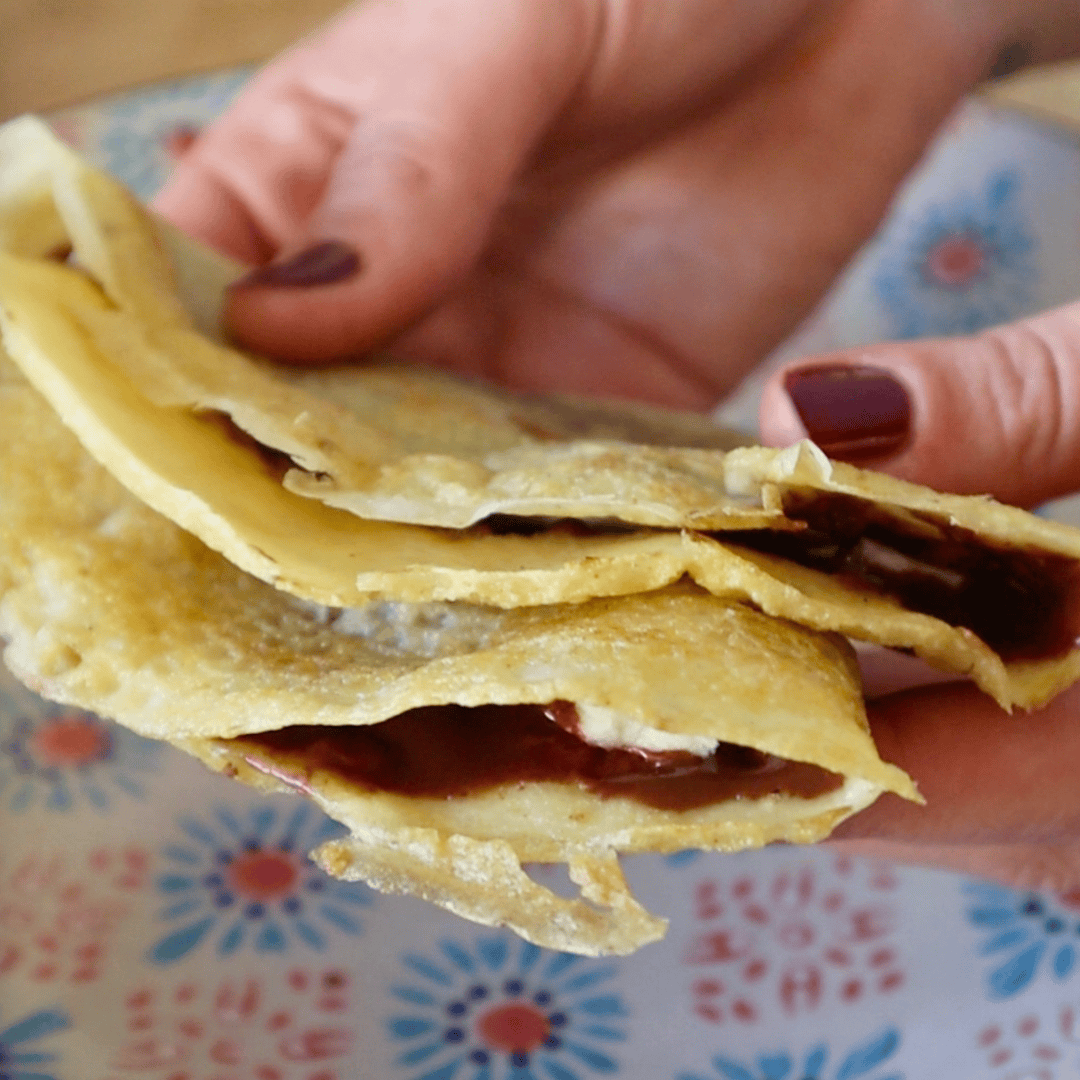If you’re looking for a quick and easy way to elevate your meals with a dash of flavor and nutrition, then gomasio is a must-have in your kitchen. This traditional Japanese condiment combines toasted sesame seeds and salt, creating a nutty, savory topping that enhances the taste of everything from toasts, rice and salads to roasted veggies and soups.
In this blog post, I’ll show you how to make gomasio at home with just a few ingredients and share some creative ways to use it in your cooking.

What is Gomasio?
Gomasio, or gomashio (ごま塩), literally translates to “sesame salt.” It’s commonly used in Japanese cuisine as a seasoning, much like how we might use table salt. It’s also very popular in macrobiotic cuisine, which is where I learned of it.
The key difference is that gomasio is packed with nutrients and flavor, thanks to the roasted sesame seeds, which add healthy fats, protein, and trace minerals. It’s often used as a way to reduce the amount of salt used.

Health Benefits of Gomasio
Apart from being delicious, gomasio has a few health benefits:
- Low in sodium: Since it uses a smaller ratio of salt to sesame seeds, gomasio provides flavor with less sodium than regular salt.
- Rich in minerals: Sesame seeds are a great source of calcium, magnesium, and zinc.
- Good fats: Sesame seeds contain healthy fats that are beneficial for heart health.
- Natural antioxidants: Sesame seeds are rich in lignans, which are powerful antioxidants.
Ingredients
You only need two basic ingredients to make gomasio, but feel free to experiment by adding seaweed or other seasonings for added flavor.
- Sesame seeds (raw white or black sesame seeds, or a mix of both)
- Sea salt (preferably coarse and whole meal, not refined table salt)
The ratio for sesame seeds and salt vary from recipe to recipe. It can go from 1:10 to 1:25 depending on how salty you want it. The recipe suggested here is 1:24.
Gomasio Variations and Add-ins

While the classic gomasio recipe is delicious as-is, there are several variations you can try to switch up the flavor profile.
- Seaweed Gomasio: Add finely chopped nori or dulse flakes to the sesame-salt mixture for extra umami and a hint of the ocean.
- Spicy Gomasio: Mix in chili flakes or a pinch of cayenne for a spicy kick.
- Herb-Infused Gomasio: Add dried herbs like rosemary, thyme, or oregano to create a more complex, savory seasoning.
- Za’atar style Gomasio: Add sumac, and thyme and you basically have za’atar!
Creative Ways to Use Gomasio
Once you’ve made your batch of gomasio, you’ll find yourself reaching for it again and again to enhance your meals. Here are a few ideas for how to use it:
- Sprinkle on top of rice: A traditional Japanese way to enjoy gomasio is over a bowl of steaming rice.
- Toss with roasted veggies: Use gomasio to season your favorite roasted vegetables for a nutty, savory touch.
- Gomasio avocado toast: Skip the usual salt and pepper and use gomasio to season your avocado toast for an extra layer of flavor.
- Top salads and soups: Add a sprinkle of gomasio to fresh salads or as a finishing touch to your soups for a rich, umami flavor.
- Season tofu or tempeh: Before serving, sprinkle gomasio over baked or sautéed tofu or tempeh to add depth to these vegan protein sources.
How to Make Gomasio (Gomashio): Japanese Sesame Salt
Ingredients
- 1 cup raw sesame seeds white, black or a mix
- 2 tsp coarse salt preferrably whole meal
Variations
- seaweed
- sumac
- thyme
Instructions
- Toast the sesame seeds. Heat a skillet or frying pan over medium-low heat. Add the sesame seeds to the dry pan. Stir or shake the pan frequently to prevent burning.
- Toast the seeds for about 10 minutes, or until they turn golden brown and give off a fragrant, nutty aroma. (For black sesame seeds, look for a slight popping sound). A good way to check wether they are not raw anymore is to check with a spoon, if they stick to the spoon it means they are still raw. if they slide from it, they aren't. You will still want to cook them for a bit longer from when this happnes, as you want them golden brown
- Toast the salt for a few minutes as well (optional)
- Remove the seeds from the heat and let them cool for a few minutes.
- Grind the sesame seeds and salt: Once the seeds have cooled, place them in a mortar and pestle along with the sea salt.
- Gently grind the seeds and salt together, just enough to break up the seeds slightly and mix them well with the salt. The goal is to create a textured seasoning, not a fine powder. Ideally you0d want about 40% of the seeds still intact.
- Alternatively, you can pulse the mixture briefly in a food processor.
- Variations: You can add in some seaweed, or sumac and thyme for a za'atar style gomasio, chili flakes, literally anything you fancy.
- Store and use: Transfer your gomasio to an airtight jar or container. It can be stored for up to a week at room temperature or longer in the fridge.
- Sprinkle it over rice, noodles, vegetables, avocado toast, or even popcorn for an extra burst of umami flavor.
Conclusion
Making your own gomasio at home is incredibly simple and rewarding. It’s a versatile, nutrient-rich seasoning that can enhance the flavor of almost any dish while keeping your sodium intake in check. Give it a try, and soon, you’ll be sprinkling gomasio on everything in your kitchen!










